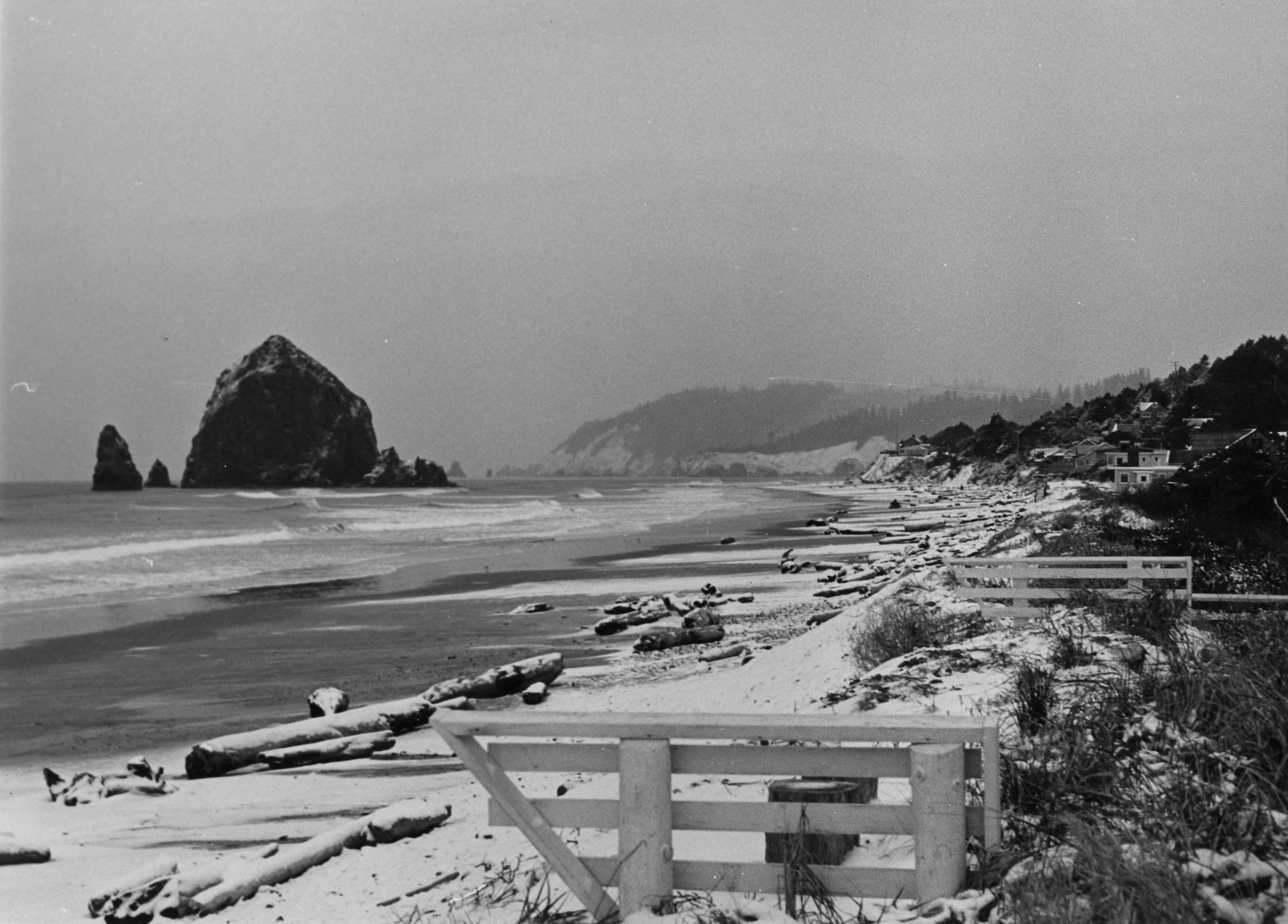
January is Full of History in Cannon Beach
That first cannon was pulled from the surf by a team of horses on January 29th, 1898. The horses were owned by John and Mary Gerritse who had long awaited the cannon’s discovery and proudly displayed the cannon on front of their Austin House Hotel and post office, it happened 114 years ago.
At the Cannon Beach History Center & Museum, we are celebrating the historic date of January 29th with USS Shark shaped cookies given away to all who stop into the museum on that day.
Another very important date in local history is January 21st. Back in 1881, this was the date that the Tillamook Head Lighthouse, known to most of us as “Terrible Tilly” was first illuminated. This amazing lighthouse was built in a most precarious and dangerous of spots, but its duty was imperative – to warn ships of the craggy shores of Oregon near the mouth of the Columbia River. Imagine how many more ships would have suffered the fate of The USS Shark without good ol’ Terrible Tilly, who now sits alone on Tillamook Rock decaying and dilapidated. How much longer one wonders, will it be until Terrible Tilly is taken by the sea? WIll it be a single storm that takes her or will the slow withering into ruins continue to be her demise?
Perhaps the most important date that January offers Cannon Beach is January 8th, when in 1806, William Clark arrived at Ecola Creek (which he named) with Sacagawea and others from the Corps of Discovery in an attempt to trade with the Tillamook Indians for blubber from a whale that had washed ashore. The whale, by this time a skeleton, had been over 100 feet long. Though the indians were not initially interested in trading with the group, they eventually sold them 300 pounds of blubber, which Meriwether Lewis wrote later was “like pork fat, but spongier”, and when cooked “tastes like beaver or dog”.
This whale represents the placing of Cannon Beach on the world map, the pioneer spirit pushing further west, the abundance that the sea gave and continues to give, and the displacement of the many tribes of Native Americans that once populated these lands.
Lewis and Clark were the beginning of European migration to the west, it was the beginning of the end for the Tillamook people who had lived in the Cannon Beach area for hundreds, if not thousands of years. By 1850, the Tillamook people had gone from a tribe of more than 2000 in 1806 to about 20. In 1856, they were placed on a reservation, and in 1970 the last speaker of their native language died.
Imagine for a moment, when a Native American longhouse stood where say Bruce’s Candy Kitchen now pulls taffy and caramelizes popcorn. Imagine whale watching being more than a fascination, but instead a matter of survival. Imagine the millions of footsteps that have walked the shores of our beach over thousands of years.
As we enjoy the winter solitude of windy walks on the empty beach, escorted only by the wind, the seagulls, and the long turned out light from Terrible Tilly out in the distance, tip your hat in acknowledgment to all of those that have come before us, and made a trail for us to follow to this beautiful slice of paradise.
Amy Stocky
Originally published in the Cannon Beach Gazette

